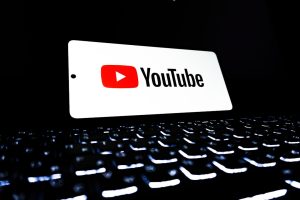
For content creators on YouTube, monetization can be both a blessing and a battlefield. As YouTube has evolved, so too have its rules and enforcement strategies, particularly around endorsements and promotions. One creator’s journey with endorsement labels on the platform is a cautionary tale — and a learning opportunity — for any YouTuber relying on ad revenue.
TL;DR (Too Long, Didn’t Read)
Improper use of YouTube’s endorsement label can cause videos to be demonetized. This label, when used incorrectly or without the right disclosures in the video itself, signals to YouTube’s algorithm that the content may not be ad-friendly. In this case, the creator saw a drop in ads from multiple videos and discovered it was due to inconsistent disclosures. Adjusting the endorsement language and ensuring proper in-video mentions restored monetization and views.
Understanding What Happened
When YouTube creators include sponsorships or promotions in their videos, they are required to mark the video as containing paid promotions. This is known as an “endorsement label.” It sounds straightforward, but it has quietly become a complex trap for creators, particularly when combined with vague or missing verbal or visual disclosures.
This particular creator, who had consistently worked with sponsors, noticed that several monetized videos suddenly became demonetized or showed dramatically reduced ad impressions. Revenue dropped significantly over a two-week span, prompting a thorough investigation.

Identifying the Trigger
The problem stemmed not from the sponsors themselves or the quality of the videos, but from the way the endorsements were presented on YouTube. The creator had ticked the “Includes paid promotion” box for compliance, but missed a crucial part — making clear disclosures within the video itself.
According to updated YouTube guidelines and re-emphasized communication from Google’s AdSense team, simply clicking the endorsement checkbox is insufficient. The video must also include a clear and prominent verbal and/or visual notification, near the beginning of the video, that the content includes a paid promotion.
This lapse flagged the videos in the algorithm as non-transparent, triggering partial or total demonetization.
The Real Cost of the Misstep
Beyond losing revenue from ads, the videos in question also saw reduced engagement. YouTube’s algorithm, when detecting content that may violate ad-friendly terms, suppresses such videos in search and recommendations. Hence, the impact was doubly damaging — lower reach and fewer ads.
The creator ran A/B tests with similar content, some with disclosure tweaks and others without. Results were undeniable — ad serving resumed only on videos where the paid promotions were clearly presented as disclosures within the opening minute and throughout the description.
The Disclosure Adjustment Strategy
To rectify the issue and reinstate monetization, the creator implemented the following adjustments:
- In-Video Verbal Disclosure: Adding a spoken line within the first 30 seconds such as, “This video is sponsored by XYZ Company.”
- On-Screen Visual Indicator: Displaying a banner or card on-screen when the sponsorship is mentioned for visual confirmation.
- Description Box Enhancement: Starting the video description with a sentence that clearly states the partnership, such as “This content includes a paid partnership with XYZ.”
- Clickable Endorsements Transparency: Whenever possible, using YouTube’s built-in paid partnership feature to show the label prominently on mobile and web versions of the video.

These changes not only improved transparency but also aligned with YouTube’s automated screening processes, preventing future flags from triggered filters.
Results and Lessons Learned
Within 5 to 7 days of making the updates, most of the affected videos started to regain their monetization status. Analytics in YouTube Studio reflected a return to normal CPMs (cost per mille) and ad fill rates. Engagement and impressions began to recover, reaffirming that consistency with platform policies pays off — literally and figuratively.
This experience underlines a vital lesson for creators:
- Just checking the YouTube endorsement box is not enough.
- Transparent and prominently placed in-video disclosures are mandatory, not optional.
- Algorithms are constantly evolving and may flag non-compliant content even without user reporting.
Preventative Tips for All Creators
For other creators looking to avoid similar mistakes, this is what you should be doing every time a sponsorship is involved:
- Use visual and verbal disclosures together, preferably early in the video.
- Always check the “includes paid promotion” checkbox when uploading.
- Review your video’s visibility settings and monetization tab after publishing.
- Let sponsors know you will be transparent as part of your standard practice.
- Revisit old videos with sponsorships to ensure they meet current disclosure standards.
Conclusion
The endorsement label on YouTube exists to protect both viewers and advertisers. But even the most well-meaning creators can suffer revenue loss if they rely on that label alone. As this story illustrates, it’s not just about clicking a box — it’s about clearly and honestly sharing the nature of the content within the video itself.
Monetization on YouTube is a dynamic ecosystem, and being transparent with your audience helps secure it.
Frequently Asked Questions (FAQs)
Q: What is an endorsement label on YouTube?
A: It’s a feature that allows creators to notify YouTube and viewers that a video contains a paid promotion or sponsorship. It helps YouTube regulate ad serving and meet transparency regulations.
Q: Why did my ads stop showing after using the endorsement label?
A: If you marked your video as containing a paid promotion but didn’t also include clear verbal or visual disclosure in the content, YouTube’s algorithm might consider it non-compliant and limit or remove ads.
Q: How can I restore monetization to affected videos?
A: Update your videos to include clear verbal and on-screen disclosures, preferably in the first 30 seconds. Also make sure the description notes the paid partnership, and verify the endorsement label checkbox is checked.
Q: Is it enough to put the sponsor in the video description?
A: No. YouTube specifically wants *in-video* recognition—both visual and verbal—plus the label and description entry. Just listing a sponsor in text won’t protect monetization.
Q: Can old videos be demonetized for missing endorsements?
A: Yes. YouTube occasionally re-evaluates older content. Videos without proper disclosures — especially those with the endorsement box checked — can be pulled from ad programs retrospectively.
Q: Are there third-party tools that help with disclosure?
A: Yes, some editing software and third-party platforms used for sponsorship management offer automatic overlays or reminder alerts to help ensure sponsorships are clearly disclosed.






